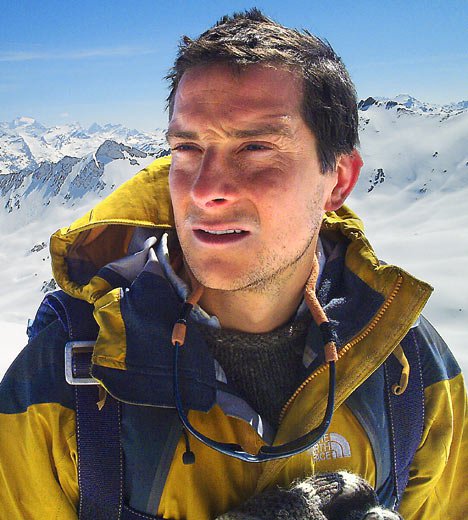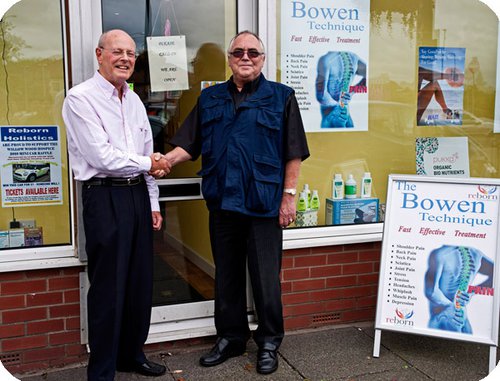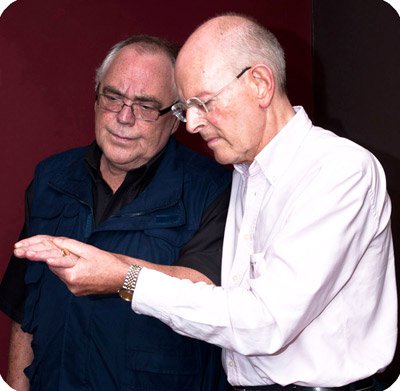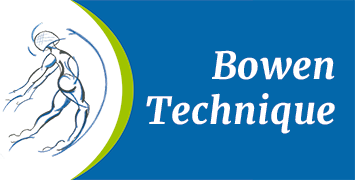In The Media
Adventurer Bear Grylls’ battle with backpain and high cholesterol
by MOIRA PETTY – 24th April 2007

To the outside world, the adventurer Bear Grylls epitomises supreme fitness. The man who catapults himself into alien, life-threatening environments, surviving on his wits alone, practically bursts with good health – or so it seems to the viewer watching him on television from the comfort of the sofa.
Yet despite appearances, Bear has been plagued with back pain for over ten years – for which he only recently found an effective treatment.
More worryingly, he also suffers from high levels of cholesterol, caused by a genetic disease which killed his father and grandfather – and which poses as much of a danger to him as his Boys’ Own exploits.
Adventurer Bear Grylls may throw himself into some of the most uninhabitable places on earth but the super fit action man suffers from a genetic condition which means he suffers from very high colesterol levels Bear’s father, former Tory MP Sir Michael Grylls, died suddenly of a heart attack at 66 in 2001; his grandfather also died prematurely of heart disease.
But it was only six months ago that Bear had a cholesterol test. He was staggered to find that he had a reading of six-and-ahalf, which is very high for someone of his age and fitness.
“I had been in the SAS Territorial Army and spent my life on physical challenges. Even when at home I exercised six days a week, alternating circuit training, running and yoga,” says Bear, now 33.
Without these high levels of activity his reading could have been even worse; his older sister, Lara, had an even higher reading of eight. Doctors recommend that cholesterol levels are under five and even lower for patients at particular risk of heart disease. Bear appears to suffer from a hereditary predisposition to dangerously high levels of cholesterol, which clogs the arteries and can lead to heart attacks and stroke. The condition – hypercholesterolaemia – affects seven people in 1,000.
Men with the condition are at greater risk of heart attack: 80 per cent will have had their first heart attack by 60, but many will suffer one in their 40s or 50s. Although the condition is not caused by a bad diet, it can be improved by one low in fats. Despite the warning given by his father’s and grandfather’s heart attacks, Bear had enjoyed a diet rich in animal fats, especially meat and milk which he thought necessary to sustain his high-octane and physically strenuous existence.
But soon after his cholesterol test, he came across The Rave Diet, written by American filmmaker Mike Anderson, who had seen members of his family die of cancer and heart disease.
Based on fruit, vegetables and wholegrains with as much raw food as possible and no animal fats or vegetable oils, it is a Spartan regime, but Bear has embraced it enthusiastically.
“After I read this, the links between the heart disease which killed my father and grandfather, my high cholesterol and my fatty diet became startlingly clear. My mother fed my father butter and cream all day long. It breaks my heart that my father never knew my children. He should have been around for another 25 years.” Bear has learnt that the key to his survival may lie not in his awesome ability to live off hostile landscapes, but in adhering to the sort of lifestyle advice promoted in every GP’s surgery. “I am planning to have my cholesterol tested again soon. But I think my new diet is the answer.”
Bear, his wife Shara and two sons (aged four and one) now eat neither meat nor fish, but get their protein from nuts, seeds, pulses and quinoa (a proteinrich grain which can be used like rice or as a porridge). They also drink oatmilk (made from oats mixed with water and other grains and beans; it is high in fibre, vitamin E, folic acid and phytochemicals, which fight cancer and heart disease). “We’re not bonkers about it – if we go out, we eat what’s available. And when I’m on an expedition I eat what I have to in order to stay alive. I’ve eaten sheep’s eyes, the still hot meat from a zebra killed by a lion, and maggots which give you 70 calories to the ounce.”
As well as his risk of heart disease, Bear also suffers from chronic back problems. Twelve years ago, aged 21, he broke his back when training with the SAS after his parachute failed to inflate at 16,000 feet. “I should have cut the main parachute and gone to the reserve but thought there was time to resolve the problem.” He landed on his parachute pack, which was like an iron bar, and fractured three vertebrae. It was extraordinary that he was alive, let alone not paralysed – but incredibly the spinal cord, which channels messages between the brain and all parts of the body, had not been severed. Bear was treated at Headley Court, the defence forces’ rehabilitation centre in Surrey.
“The doctor said I was a miracle man. I had come so close to severing my spinal cord. Because of my age and my fitness, they decided I could avoid surgery.” Instead, he underwent ten hours a day of physiotherapy, swimming, stretching and ultrasound treatment – a programme designed to help servicemen get back to active duty, but rarely available to civilians.
The alternative – and one offered to most people in a similar situation, but without Bear’s peak fitness – is surgery to fuse the broken vertebrae. ‘I had nightmares for months. Still, I was lucky to walk away without surgery – but ever since, I have suffered twinges and pains.”
Deep massage helped, but he says he always felt physically ‘unbalanced’ by his injury. Then a year ago his wife suggested he see a Bowen therapist. The Bowen technique, developed in the 1950s, involves using rolling movements over muscles, ligaments and tendons. This is said to send impulses to the brain to trigger the body’s own healing system. Precisely how it works is a mystery, but many professional football clubs maintain a Bowen therapist as it has been shown to be very effective in realigning the skeletal structure.
“I was sceptical, but wanted to keep an open mind,” says Bear. He went to see East Sussexbased Bowen therapist Sarah Yearsley. “With the slightest squiggle of her fingers, it felt like petrol was being put back in my tank and I could feel all the stress seeping away. More importantly, after my back accident, my spine and pelvis had lost alignment, so I felt unbalanced.”
Sarah explained that Bear’s pelvis was slightly twisted – and that this would cause endless problems and backache. Most fans of Bear’s Born Survivor series will not have noticed anything wrong, yet a subtle misalignment – visible only to the expert eye – can impact on total health For Bear, who is often jumping out of planes, having complete structural alignment is even more important than for the average person.
Bear describes himself as now ‘hooked’ and has treatment every month. It has helped him prepare for his most perilous challenge yet. Next month he is attempting a powered paraglide over Everest’s 29,035ft summit. “I am scared I could black out in the click of a finger.” If this venture seems inconsistent with
his desire to lead a healthy life, Bear has an announcement. “This is the last of my big expeditions or challenges. They’re getting too dangerous. I’m not on the Ranulph Fiennes road of trying to beat the last expedition.” Sir Ranulph has been an inspiration to Bear all his life.
As a boy, Bear climbed the bell tower at Eton, where the baronet had also once been a pupil. “In the lead lining, I found the initials RF. I put BG next to his,” he recalls. But while he is ‘full of dreams and ambitions,’ he also has a family and a long-suffering wife at home. In fact, relaxation is vital to Bear, who says, somewhat surprisingly: “I don’t thrive on stress. I love lying on the deck on our houseboat reading a book. “I’m terrified of walking into a room full of people. Sitting down at a dinner table with 15 strangers brings me out in a sweat.” Yet, he says, fear isn’t the reason not to do something. “I’m scared of heights, yet I’ve just abseiled 770 feet off Canary Wharf for charity. “But the folly of youth is that you think you’re immortal. Losing my father and having my children has brought me to my senses. I want to be around to love and guide my sons for a long time.”
Bowen Therapy provides the only answer for Coronation Street’s Jack.
“Try it, and you may get one heck of a surprise!”

Actor Bill Tarmey – one of Coronation Street’s best loved characters, Jack Duckworth – has found his life transformed by the Bowen Technique, one of the fastest-growing complementary therapies. Bill is convinced that without Bowen he’d still be suffering great misery from severe and continuing pain in his muscles and joints, especially at night.
For more than a year his nights had been ruined by being woken up three or four times by intense pain in his shoulders, arms and hips. “It was a really upsetting and distressing time,” he explains: “I was desperate to find an answer.”
The sleepless nights were affecting his ability to be properly focused on the Coronation Street set. “Ironically, I’d previously been cured of sleep apnoea, which had caused me to fall asleep on the set,” he says: “But almost as soon as that was sorted, I started to have sleep problems for an entirely different reason.”
He had tried all the conventional treatments for his pain. He didn’t want any more surgery – “I’d had enough of people going inside me” – but he was willing to try anything else. “I would literally have done whatever anybody suggested – including standing on one leg playing a banjo – if I’d thought it would help.”
He found out about Bowen through his brother. It’s a drug-free, non-invasive, hands-on therapy, with a remarkable record of success in helping clients with a wide range of conditions, including back, neck, shoulder and other acute and chronic muscular pain; stress-related conditions including depression; asthma, hay fever and other respiratory problems; sports injuries, IBS, migraine, and a host of other health issues. It is suitable for people of all ages, from tiny babies with colic to the more mature clients who suffer from arthritis. There are many personal testimonies of Bowen working when nothing else has helped.
Bill fixed to see local Bowen therapist, Hadden Todd, based in Manchester. Hadden explained that Bowen would almost certainly help, although the fact that his problems were so intense meant that it would take up to three treatments before the full effect would be felt. “I made sure that I had those three treatments in three weeks, the minimum time,” explains Bill.

By the third visit, Bowen had achieved wonders. “The difference for me was enormous, really enormous,” says Bill: “Even in that short time, I simply wasn’t waking up any more – and the most I have felt since has been a dull ache.”
He now has a ‘maintenance’ Bowen session every four to six weeks – and it’s become a family thing! Bill was so impressed by Bowen that he suggested it to his wife, who had been attending pain clinics with a spinal problem for some 15 years. “She now has Bowen regularly, just like me,” he explains, “and my daughter is also having Bowen.”
He is puzzled by the unwillingness of doctors to suggest Bowen as a possible solution. “If they know about it, I can’t understand why they don’t gently recommend it,” he says: “It’s not as though the Bowen therapist is going to stick knives or darts in you!”
Bill now recommends Bowen to anyone who is experiencing pain. “The point is, Bowen is so gentle in comparison to other hands-on treatments: no one is going to throw you around the room by your legs – so at the very least it can’t do any harm.”
“I say give it a go before there’s any talk of surgery or other more drastic treatment. Try Bowen … and like me, you may get one heck of a surprise.”
Maybe alternative baby
Can complementary therapies really help couples desperate to have
children? Apparently so, discovers Sally Brown
Conventional medicine can offer much to those with fertility problems, yet more and more people are turning to alternative therapies before embarking on the process of assisted conception, while others use such therapies to help them deal with the side-effects of drug-based treatments and to support them through IVF.
The Guardian, Saturday August 11 2001
Sally Brown
Therapists are keen to stress that they don’t offer a magic solution, however. Their aim, they say, is simply to get both partners into optimum condition physically and mentally, so conception can happen naturally. Even so, many have high success rates: acupuncturist Roisin
Golding, for example, who practises at Panakeia in London, claims that 60% of those who come to her with fertility problems become pregnant. Some practitioners, especially those in traditional Chinese medicine, also aim to identify and remove any “blocks” to conception. “In Chinese medicine, the whole orchestra of the body must be tuned together to work in harmony,” explains Golding. “It can redress very subtle imbalances, such as a poor womb lining, that aren’t picked up by conventional medicine, and also classifies several categories of infertility, such as an energy block that prevents conception, or a weakness in the area that supports conception.” According to Golding, the acupuncturist aims to redress any hormonal imbalances that may cause period problems, and also looks at general health issues such as stress, insomnia and digestion problems, all of which can affect conception. Needles are placed on the “conception vessel” meridian, which runs from the perineum to the chest, and which is believed to regulate hormones and so prepare the womb for pregnancy.
Another acupuncturist, Mina Hari, who works in Waterloo, London, has many patients referred to her by IVF consultants. “Having acupuncture improves the chances of IVF,” she says, “but it also minimises the physical toll that the process takes on the body.” Her first aim is to restore a natural 28-day menstrual cycle (any variations from this norm suggest an imbalance in the body’s chi, or energy system) and then ensure that there is abundant energy flowing to the womb, and that there are no blood deficiencies, such as anaemia.
Reflexologists, too, maintain that energy blocks can prevent conception, and that manipulating the foot can correct the problem. Their success has been such that a two-year trial is now under way at the IVF unit of Derriford Hospital, Plymouth, run by reflexologist Jane Holt, who approached the unit after 13 of the 23 women she treated for a range of fertility problems became pregnant last year. “Infertility is a complex problem,” says Holt, “and often what is needed is something that gives the system a bit of a kick-start. That’s what reflexology can do.” In the study, 150 volunteers will be offered reflexology instead of the fertility drug clomifene, which is usually used to induce ovulation.
A lesser-known therapy that has a surprisingly high success rate is the Bowen Technique, a hands-on method better known for treating tennis elbow, which involves manipulating muscles, tendons and ligaments to trigger the body’s own healing mechanism. “For infertility, we use a particular system of moves that addresses the endocrine [hormonal] system and the pelvic area,” says Dr Jaimini Raniga at the Hale Clinic, London. “Mental and emotional stress can cause muscles to tighten and restrict the natural blood-flow, lymphatic drainage and nerve supply of the body, which can all affect fertility.” Women see Raniga for a session on the first day of their menstrual cycle and are then told to abstain from intercourse until after a second session, on day 14. “Most of my patients conceive after two sessions,” she adds. But fertility problems are not always physical, say some. “There are welldocumented cases of psychogenic infertility,” says London-based psychologis and hypnotherapist John Butler. “It’s a poorly understood area, but we do know that the autonomic nervous system and the endocrine system are both influenced by the mind.” Butler has also treated clients with a subconscious fear of pregnancy caused by relationship doubts or fear of the responsibility of being a parent. “I use hypnotherapy to give them suggestions for relaxation, confidence and positive thinking, then get them to imagine ovulation, conception and the growth of the foetus,” he says.
He is quick to stress, however, that psychogenic infertility is rare. “Just because your doctor can’t find a physical reason for your fertility problems doesn’t mean it’s all in the mind; there may be problems the medical profession is unaware of. But I do know that couples who are feeling under pressure from the whole process of trying to conceive will benefit from some form of relaxation therapy.”
